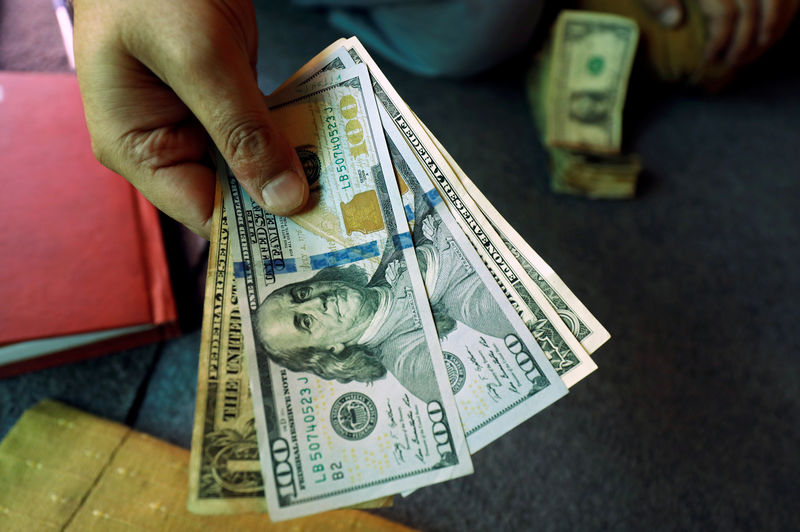Forex
Asia FX heads for weekly losses, dollar strong amid early rate-cut doubts


© Reuters.
Investing.com– Most Asian currencies moved little on Friday but were headed for weekly losses, while the dollar hovered near one-month highs amid increasing doubts that the Federal Reserve will cut interest rates early this year.
The was the worst hit by concerns over higher-for-longer rates, and was also the worst performer in Asia this week. The yen fell 0.1% on Friday and was set to lose 2.3% this week.
Data on Friday showed Japanese (CPI) inflation fell to its lowest since June 2022 in December, setting up the Bank of Japan to largely maintain its ultra-dovish policy when it .
Chinese yuan hit by economic jitters, but PBOC action limits losses
Broader Asian currencies were also dented by growing concerns over China, after the region’s largest economy grew less than expected in the . Growth for 2023 also a 5% government target.
Losses in the were limited by a series of strong midpoint fixes from the People’s Bank of China. The PBOC was also seen selling dollars on the open market to support the Chinese currency.
The yuan was set to lose 0.4% this week- its third straight week of declines. The currency sank to a near two-month low earlier in the week.
The PBOC is also widely expected to keep its benchmark on hold at record lows this Monday.
Weakness in China spilled over into other currencies. The rose 0.2% on Friday but was down 1.6% for the week after sinking to a one-month low.
The was headed for a 1.8% weekly decline, while the was set for a 0.8% weekly decline following an unexpected drop in the country’s key .
Most Asian currencies were nursing a weak start to 2024, as signs of sticky U.S. inflation and labor market strength spurred growing doubts over early interest rate cuts by the Fed. Regional currencies largely reversed all gains made through December, as markets began pricing in later and potentially smaller U.S. rate cuts in 2024.
Dollar heads for strong weekly gains as March cut bets recede
The and fell slightly in Asian trade, but remained close to an over one-month high hit earlier this week. The two were also set to end the week between 0.9% and 1% higher.
Strong data and a series of hawkish-leaning comments from Fed officials this week spurred increasing doubts that the Fed will begin cutting rates by as soon as March 2024.
Traders were also seen sharply scaling back bets on a March cut, according to the . Traders were now pricing in a 51.9% chance for a March cut, down sharply from the 68.3% seen last week.
Recent signs of resilience in the U.S. economy gives the Fed enough headroom to keep rates higher for longer. Than bank is also unlikely to budge on interest rates until inflation is within its 2% annual target- with December’s showing little progress.
Upgrade your investing with our groundbreaking, AI-powered InvestingPro+ stock picks. Use coupon INVSPRO2024 to avail a limited time discount on our Pro and Pro+ subscription plans. Click here to know more, and don’t forget to use the discount code when checking out!

 Forex3 years ago
Forex3 years agoForex Today: the dollar is gaining strength amid gloomy sentiment at the start of the Fed’s week

 Forex3 years ago
Forex3 years agoUnbiased review of Pocket Option broker

 Forex3 years ago
Forex3 years agoDollar to pound sterling exchange rate today: Pound plummeted to its lowest since 1985

 Forex3 years ago
Forex3 years agoHow is the Australian dollar doing today?

 Cryptocurrency3 years ago
Cryptocurrency3 years agoWhat happened in the crypto market – current events today

 World3 years ago
World3 years agoWhy are modern video games an art form?

 Commodities3 years ago
Commodities3 years agoCopper continues to fall in price on expectations of lower demand in China

 Economy3 years ago
Economy3 years agoCrude oil tankers double in price due to EU anti-Russian sanctions


























